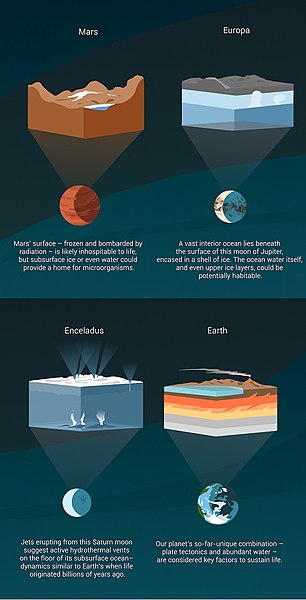The Fermi paradox is the discrepancy between the lack of conclusive evidence of advanced extraterrestrial life and the apparently high likelihood of its existence. As a 2015 article put it, "If life is so easy, someone from somewhere must have come calling by now."
Los Alamos National Laboratory, Los Alamos, New Mexico, United States
Enrico Fermi (1901–1954)
Radio telescopes are often used by SETI projects.
A composite picture of Earth at night, created using data from the Defense Meteorological Satellite Program (DMSP) Operational Linescan System (OLS). Large-scale artificial lighting produced by human civilization is detectable from space.
Extraterrestrial life, alien life, or colloquially simply aliens is life which does not originate from Earth. No extraterrestrial life has yet been conclusively detected. Such life might range from simple forms such as prokaryotes to intelligent beings, possibly bringing forth civilizations that might be far more advanced than humanity. The Drake equation speculates about the existence of sapient life elsewhere in the universe. The science of extraterrestrial life is known as astrobiology.
Besides Earth, Mars, Europa and Enceladus are the most likely places in the Solar System to find life.
Lifeforms produce a variety of biosignatures that may be detectable by telescopes.
The Green Bank Telescope is one of the radio telescopes used by the Breakthrough Listen project to search for alien communications.
Artist's impression of Gliese 581 c, the first terrestrial extrasolar planet discovered within its star's habitable zone








